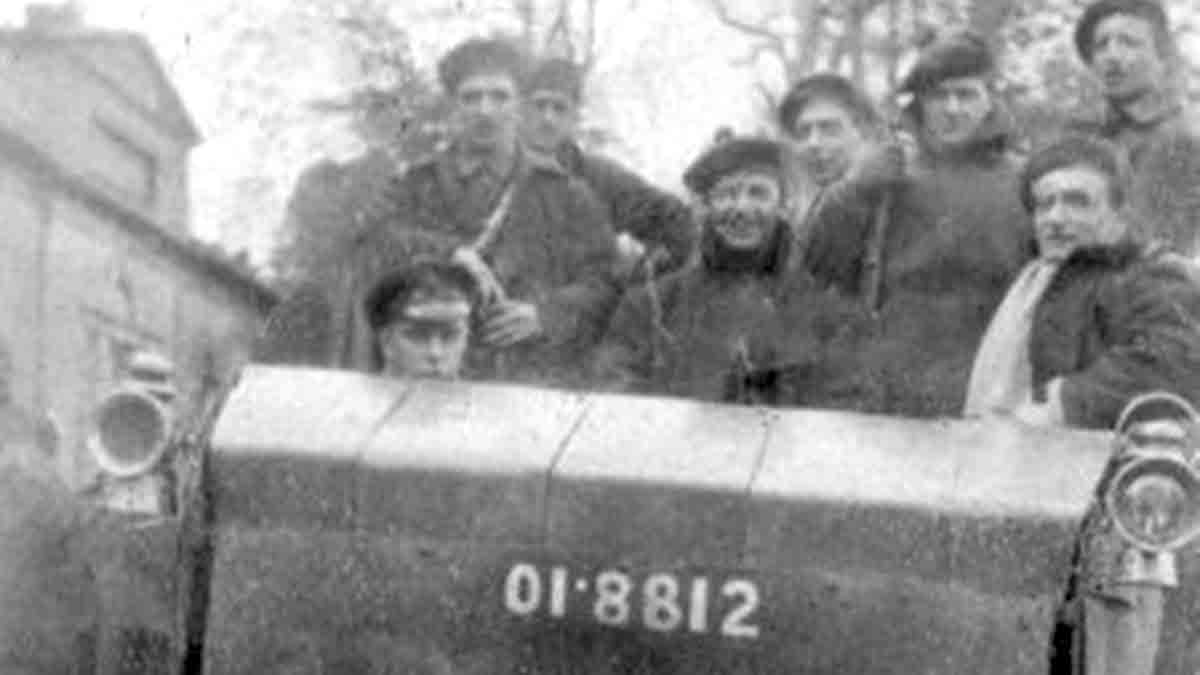PART 1
BY JOHN FITZGERALD
Last week I concluded the story of what happened to Jim Bolger of Callan when the Tans snatched him from Tom Nolans’s bus and drove him to the dreaded Woodstock House outside Inistioge…Tan HQ.
Many other men and women equally felt the oppressor’s wrath in those dark days.
The Tans took a special interest in the Barron family of Sheepstown, Newmarket during the War of Independence. The family drew their wrath owing its prominent and heroic role in the struggle for independence. Scarcely a night went by between the commencement of hostilities and the Truce without one or other branch of the patriotic Barron clan receiving an unfriendly visit from the men in black and khaki.
Three members of the family had the distinction of facing imprisonment for activities deemed to constitute disloyalty to the Crown.
Tom, Watt and James were attached to the County Kilkenny IRA’s famed 7th Battalion, while Stacia, Mary, Ellen, Catherine and Lizzie Barron served with Cumann na mBan.
All of them lived on the edge, somehow managing to stay a step or two ahead of the Crown Forces, aware that a hangman’s noose or a firing squad- or a long prison term- awaited them if caught in the act of “subversion.”
At the first hint of approaching Crossley Tenders in the Hugginstown and Newmarket areas, the activists dashed to cover, scattering across fields and over ditches. They’d hide until the raid was called off, and then cautiously return to their homes.
The women, if they helped the men to escape, had to run back to the house as quickly as possible before the raid began as the British military obliged every household in the area to put up a list of its occupants, including the dog’s name, on the door.
Tom and Watt Barron had to go on the run following the IRA attack on Hugginstown RIC Barracks in March 1920. They sought refuge in a succession of safe houses or slept in ditches and woods.
Tom and Watt had played key roles in the barracks attack, so they had to keep well clear for a while of their farmhouse in Sheepstown, as the British scoured the countryside in search of the culprits.
Though seemingly obsessed with control and repression, the Crown forces often fell below their supposed military standards, setting out on raids in an advanced state of drunkenness. Many of them had been recruited from English jails while others were suffering from shellshock and other after-effects of trench warfare.
The Barron family had to put up with raids at all hours of the day and night, with soldiers forcing them at gunpoint out onto the road while they searched- and often wrecked –the houses in a futile bid to apprehend the elusive Tom and Watt Barron.
The Independence struggle took its toll on non-combatants. Tom and Watt Barron’s elderly parents Will and Sarah Barron still lived in the frequently raided house.
One freezing winter’s night they awoke to the sound of soldiers crashing into their room. They were pulled out of bed at gunpoint, and forced to stand out on the roadside with their hands raised, for more than an hour, shivering in their underclothes while the house was ransacked.
After each raid on a “rebel house”, once the soldiers were safely out of sight the women crept down to the fields to retrieve the food they’d hidden and bring it back to the house. This was a necessary precaution because the raiding British military routinely stole all their food.
Eventually Tom and Watt’s luck ran out. They and James Barron were arrested a few weeks after the Hugginstown Barracks attack. Tom and Watt were conveyed to Kilkenny Military Prison, from there to Cork Prison and then by ship to Belfast Prison before being shipped to England.
They ended up in Wormwood Scrubs Prison in London. It was a grim place, but they found themselves in good company. They joined other suspected members of the IRA team involved in the Huggintown attack and took part in the famed eighteen-day hunger strike by Republican prisoners.
James Barron was taken to Woodstock, where, under intense interrogation, he denied any knowledge of the Hugginstown attack. While he was in the Auxiliary HQ, his sister Stacia called there to demand his release, insisting he was innocent. He was the only man who could work the farm at Sheepstown, she told the stern faced officers who listened to her, bemused by her temerity in approaching them.
Stacia at the time worked at Graiguenamanagh Creamery and calling to Woodstock House was a brave move on her part because, unknown to the authorities, she was herself an active member of Cumann na mBan. Among other duties she smuggled guns and dispatches for the IRA, focusing especially on the Graiguenamanagh district. James’ tormenters gave him the benefit of the doubt and released him from custody on condition that he refrained from engaging in any further action against the Crown Forces…
The Auxiliaries arrested Tom Barron again in 1921, snatching him from the village of Newmarket…
To be continued…
***
My novel, Invaders, tells the story of how a small band of men and women in 17th century Ireland took on one of the most powerful armies in the world. It’s available from Amazon and Kilkenny bookshops.




















